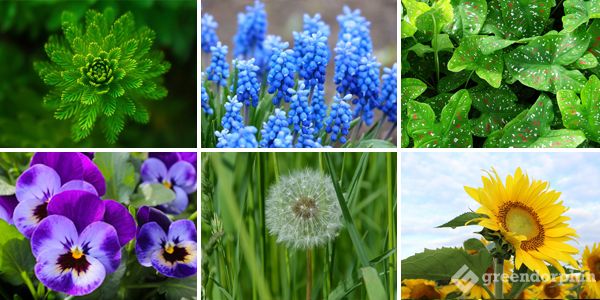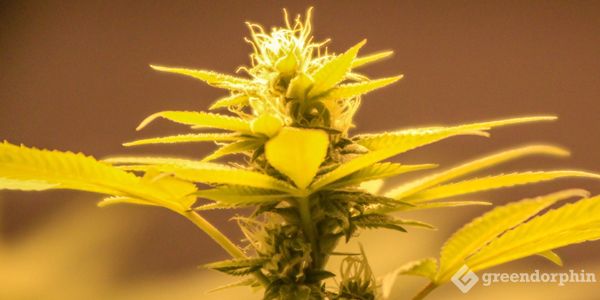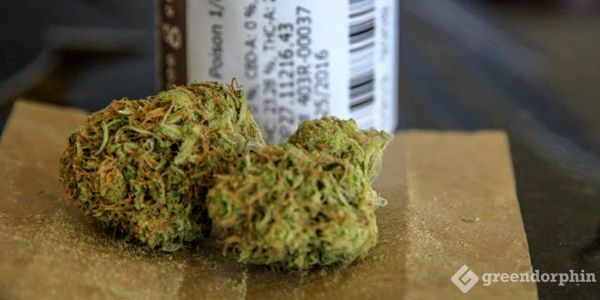There seems to be a lot of confusion about cannabis strains, hybrids and generally about how marijuana fits into the Plant Kingdom, so I thought I would clear it up for you as best as I can.
We often talk about cannabis strains and only recently realised that it is not always obvious how this miracle plant fits into the world and what other plants it is related to.
Recently we published an article about the 3 cannabis ‘strains’ and we realised that some of our readers are unsure about what makes a strain and how does this all work…
I studied biology and plant science, so I thought I would try to explain it as simply as possible.
Kingdom: Plant Kingdom (Plantae)

These living things create energy from sunlight into food through photosynthesis that they store as carbohydrate. Animals can’t create energy from the sun or anything else really other than eating plants or other animals…
So far pretty simple, let’s look at the division real quick.
Division (phylum): Magnoliophyta Division

All you need to know here is that cannabis belongs to the division that includes all plants that flower.
Easy to remember that cannabis, fortunately, does bring a flower, so Division is done. Next step down the path is Class.
Class: Magnoliopsida Class

This is pretty easy to grasp as well. These plants also referred to as dicotyledons or abbreviated to ‘dicots’, meaning that they begin germination with 2 leaves, as opposed to one leaf, like grasses that only bring one leaf when germinating.
Order: Rosales

You might be surprised to read that cannabis belongs to the Rosales order, same as Rose, Apple or Strawberries. However, this is a huge Order, with over 7700 species divided into 9 Families, so this order does include a huge variety of plants. And also remember that many plants are in this order due to evolutionary origins, but they may have very few characteristics in common.
Family: Cannabaceae

Ok, now we are down to the Family that cannabis belongs to. It is quite diverse and plants like hops and celtis belong to this family as well. Once again, more so due to shared evolutionary origins.
Genus: Cannabis L.

Now we’re down to the ‘genus’ we refer to as “Cannabis”. In simple terms, a genus is a taxonomic group that includes all closely related species. From the genus level, you notice an L. at the end of the scientific names. The L. is there to honour botanist Carl Linnaeus, who is considered to be the father of taxonomy.
Species: Cannabis sativa L.

It gets a little confusing here as the species that ALL marijuana strains belong to is Cannabis sativa, even Indica strains belong to the Cannabis sativa species but this will make more sense below.
Subspecies:
Cannabis sativa L. ssp sativa, Cannabis sativa L. ssp indica, Cannabis sativa L. ssp ruderalis

The Cannabis sativa species has 3 main subspecies as we discussed above.
These scientific names correspond with the below common names:
Cannabis sativa L. ssp sativa – Cannabis sativa
Cannabis sativa L. ssp indica – Cannabis indica
Cannabis sativa L. ssp ruderalis – Cannabis ruderalis
We talk about these 3 subspecies in more details here.
For further information on the differences between indica and sativa watch the below video with Dr Teh, cannabis doctor going through them in details:
Variety: Durban Poison

(Durban Poison is just an example I’ve picked because it is one of my favourite varieties, but there are hundreds of others. I will use this one to explain this section).
You might have noticed that I did not use the scientific name for the variety.
The scientific name of varieties would be Cannabis sativa L. ssp. sativa var. xyz however, these varieties being still looked at as a Schedule 1 drug by the US Federal Government and getting them accepted as official varieties, is no simple task as of today.
A variety describes a population of plants within a Species, that have their differentiating minor characteristics that make them unique.
Varieties are either bred or created by nature whereby an isolated population of species develops unique characteristics while adapting to their environment.
Varieties can also be created by interbreeding species or subspecies.
That is how you get the “hybrid” strains. They are cross-pollinating Cannabis sativa with Cannabis indica (and sometimes with Ruderalis) to represent certain characteristics of the species in the new hybrid.
Always keep in mind that genetics are one thing when we talk about plants. The environment you keep your cannabis plants in has a huge effect on the individual characteristics of your plants. We discussed ‘genotypes’ here, however, there are also so-called ‘phenotypes’ of varieties depending on the circumstances. As an example, a 50% – 50% sativa and indica hybrid, could act and look a lot more like the indica parent under certain conditions, while the same plant could look and act like the sativa parent under a different set of conditions.
Strain: Durban Poison
What? That’s the same as the variety, isn’t it?
Yes, it is, let me explain…
You hear ‘Cannabis strains’ more than any of the above categories, so you might have noticed that ‘Strain’ has not been mentioned yet. The term, ‘strain’ has no ranking status in botany as such.
The term is used to refer to plants sharing a uniform morphology and common ancestors.
In the cannabis world, ‘strain’ is most often used interchangeably for ‘variety’.
We could argue the scientific correctness of using the term “strain” how we apply it in the world of cannabis. The ‘strains’ here are actually varieties, however, we all tend to prefer ‘strain’ and it is now too ingrained into the cannabis culture, so I surely won’t try to change it.
Which among the cannabis strains and variety is your personal favorite?
Tell us in the Comment Section below!
- Nimbin Medican – Educating Australians About Medical Cannabis - January 28, 2020
- Pill Testing and Roadside Drug Testing – When is it Appropriate to Test for Drugs? - August 2, 2019
- The Australian Cannabis Summit in Review - July 16, 2019


